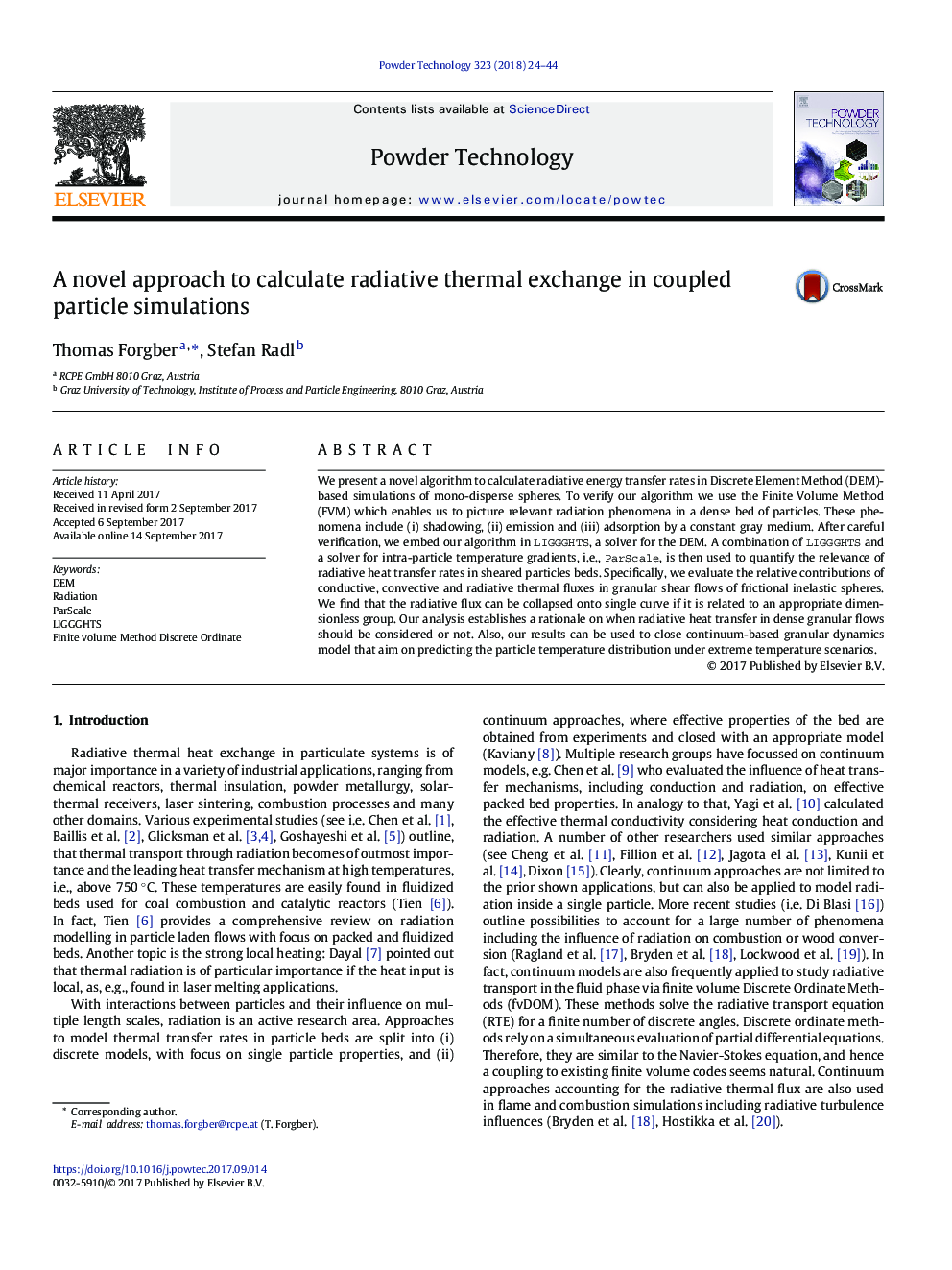| Article ID | Journal | Published Year | Pages | File Type |
|---|---|---|---|---|
| 4914749 | Powder Technology | 2018 | 21 Pages |
â¢Novel approach to calculate radiation in coupled particle simulationsâ¢Careful verification with Finite Volume Method (FVM) and against literature dataâ¢Radiative flux is collapsed on single curve over an appropriate dimensionless group.â¢Evaluation of scenarios where radiation is of dominating importance
We present a novel algorithm to calculate radiative energy transfer rates in Discrete Element Method (DEM)-based simulations of mono-disperse spheres. To verify our algorithm we use the Finite Volume Method (FVM) which enables us to picture relevant radiation phenomena in a dense bed of particles. These phenomena include (i) shadowing, (ii) emission and (iii) adsorption by a constant gray medium. After careful verification, we embed our algorithm in LIGGGHTS, a solver for the DEM. A combination of LIGGGHTS and a solver for intra-particle temperature gradients, i.e., ParScale, is then used to quantify the relevance of radiative heat transfer rates in sheared particles beds. Specifically, we evaluate the relative contributions of conductive, convective and radiative thermal fluxes in granular shear flows of frictional inelastic spheres. We find that the radiative flux can be collapsed onto single curve if it is related to an appropriate dimensionless group. Our analysis establishes a rationale on when radiative heat transfer in dense granular flows should be considered or not. Also, our results can be used to close continuum-based granular dynamics model that aim on predicting the particle temperature distribution under extreme temperature scenarios.
Graphical AbstractFigure 1: Sample result predicted by the fvDOM solver available in OpenFOAM for a packed bed with an average particle volume fraction of Ïp â¼ 0.5. Download high-res image (208KB)Download full-size image
